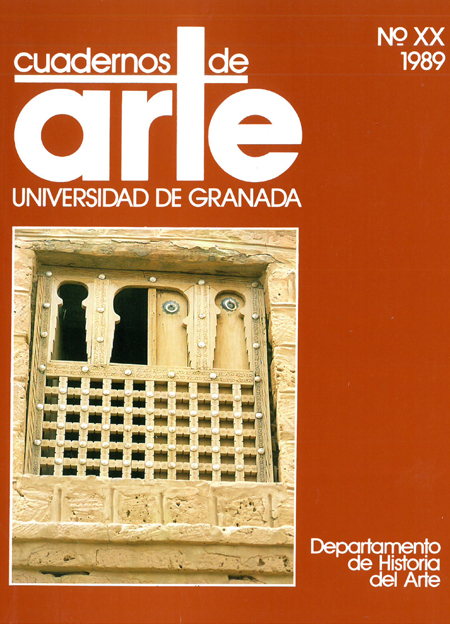Las aporias de Mateo Inurria
Abstract
Mateo Inurria Lainosa (1867-1924), has been considered by critics as one of the most important artists of that transitional period, prior to 1936, made up of those artistic centaurs who galloped midway between two different tendencies, on one side a peculiar XIXth century spanish romanticism and, on the other hand, an incipient awakening of a castillean Art-Nouveau rennaissance.The following analysis is an attempt to come closer to each one of the various phases of the work of thisgreat artist with an specially critical eye towards the latest and most revealing discoveries that have only recently appeared, after much investigation of his work.
Two special doubts, never before considered up till now, are specially underlined: the full influence that the work of Auguste Rodin might have had on his work, along with his own peculiar contribution towards the prevailing andalucian cultural regionalism of the pre-civil war era.
Downloads
Download data is not yet available.
Downloads
Published
1989-11-10
How to Cite
Palencia Cerezo, J. M. (1989). Las aporias de Mateo Inurria. Cuadernos De Arte De La Universidad De Granada, 111–131. Retrieved from https://revistaseug.ugr.es/index.php/caug/article/view/11000
Issue
Section
Estudios
License
Los autores que publican en esta revista están de acuerdo con los siguientes términos:- Los autores conservan los derechos de autor y garantizan a la revista el derecho de ser la primera publicación del trabajo al igual que ser licenciado bajo una licencia Creative Commons que permite a otros compartir el trabajo con un reconocimiento de la autoría del trabajo y la cita de la fuente original, con un uso no comercial y siempre que no se hagan obras derivadas.
- Los autores pueden establecer por separado acuerdos adicionales para la distribución no exclusiva de la versión de la obra publicada en la revista (por ejemplo, situarlo en un repositorio institucional o publicarlo en un libro), con un reconocimiento de su publicación inicial en esta revista.
- Se permite y se anima a los autores a difundir sus trabajos electrónicamente (por ejemplo, en repositorios institucionales o en su propio sitio web) antes y durante el proceso de envío, ya que puede dar lugar a intercambios productivos, así como a una citación más temprana y mayor de los trabajos publicados (Véase The Effect of Open Access) (en inglés).


 ISSN-e: 2445-4567
ISSN-e: 2445-4567








